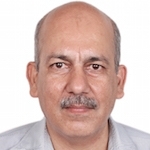|
CLAWS is indeed a happening place and one has to be there to make the most of it. The other day a privileged audience had the benefit of interacting with Maj Gen Richard M Burr, who is the Deputy Commanding General (Operations) of the United States Army, Pacific. The general has commanded a Division and Deployable Joint Force Headquarters, and has had extensive multinational command and operational experience with Special Forces. In 2008, he was the inaugural Commander of ISAF SOF, comprising all Special Forces assigned to the International Security Assistance Force in Afghanistan. He has commanded the Special Air Service Regiment, and the Special Forces Task Groups in Afghanistan (2002) and Iraq (2003).
The General was on his second visit to Indiathis year and he chose to speak on the twin subjects of Future of Indo-US Military engagement and Regional Cooperation, multi literalism and how it can be operationalised. The General’s talk touched issues of individual and collective training opportunities, operational preparedness, readiness to tackle natural disasters, and constructive multilateral engagement in the region. The General elaborated at length on the engagements of the US Army, Pacific in its areas of interest spanning from Hawaii to the western borders of India, and particularly those in the Korean Peninsula. The General also talked about the military engagement with US alliance partners to include Australia, Japan, Korea, Philippines and Thailand, and also with regard to strengthening of the US military partnership with India. The US Army Pacific is currently commanded by a four star general and has a standing strength of 106,000 soldiers spanning from the Northwest Coast of the United States and Alaska to the Asia-Pacific region, including Japan.
But the issue which intrigued most in the audience was the fact that the Deputy Commanding General (Operations) of the US Army Pacific was an Australian army officer. CLAWS also enjoys the reputation of some very straight forward and candid questioning. In the interaction that followed, the General was requested to comment on the nature of his appointment and particularly if there were any conflict of interests involved. Gen Burr was equally candid and said that he was extremely satisfied in the appointment which he has now held for over two years. This working arrangement between the two armies demonstrates the enormous amount of trust between the two countries and the US army is of the opinion that it brings unique perspectives and experiences to the appointment. It improves decision making, helps in formulation of better strategy, and naturally encourages thinking and planning multilaterally. Gen Burr said that the model has also been replicated by the United States with the United Kingdom and Canada. Undoubtedly, such cross postings can yield enormous benefits, apart from strengthening relationships.
Interestingly closer home, many a high powered committees have recommended exploitation of cross postings,though on a different plane.The Standing Committee on Defence in its Thirty Sixth Report on ‘Status of Implementation of Unified Command for Armed Forces’ in Feb 2009 strongly recommend that the staffing pattern in the Ministry of Defence be suitably changed to appoint the Armed Forces personnel of requisite expertise at the level of Joint Secretary and/or Additional Secretary so that the Armed Forces Headquarters may be intrinsically involved in national security management and apex decision making processes.The committee was of the opinion that such a system would not only provide an effective interface between the MOD and the different Services but will also go a long way in promoting and synchronizing jointness among theServices Headquarters.
Recommendations of the Standing Committee actually originate from the Kargil Review Committee report which had recommended that that the entire gamut of national security management and apex decision-making and the structure and interface between the Ministry of Defence and the Armed Forces Headquarters be comprehensively studied and reorganized. Even the Group of Ministers in its report on `Reforming National Security System’ had made similar observations.
Remarkably, the Headquarters Integrated DefenceStaffin its organisation structure has a Joint Secretary (International Affairs) - from MEA, Joint Secretary (Administration & Personnel) - from Ministry of Defence, Scientific Advisor to Chief of Integrated StaffCommittee (CISC) - from DefenceResearch and Development Organisation and Civil Analyst (Joint Secretary level) - from Intelligence Agency. But on the other hand, despite recommendations of the Kargil Review Committee, Group of Ministers on `Reforming National Security System’, and the Standing Committee of Defence, even today, the Ministry of Defence does not have a single army officer at the level of Joint Secretary and/or Additional Secretary. One really wonders why we haven’t been able to bridge this gap and for so long, particularly when the services have no dearth of competent, specialist and experienced officers to handle appointments in the Ministry of Defence. Such cross attachments will not only bring in fresh perspectives and unique experiences in management of defence but shall also go a long way in strengthening the national security system. Gen Burr’s absorption by a foreign army in an operationally sensitive appointment is a case in point.
Views expressed are personal.
|



